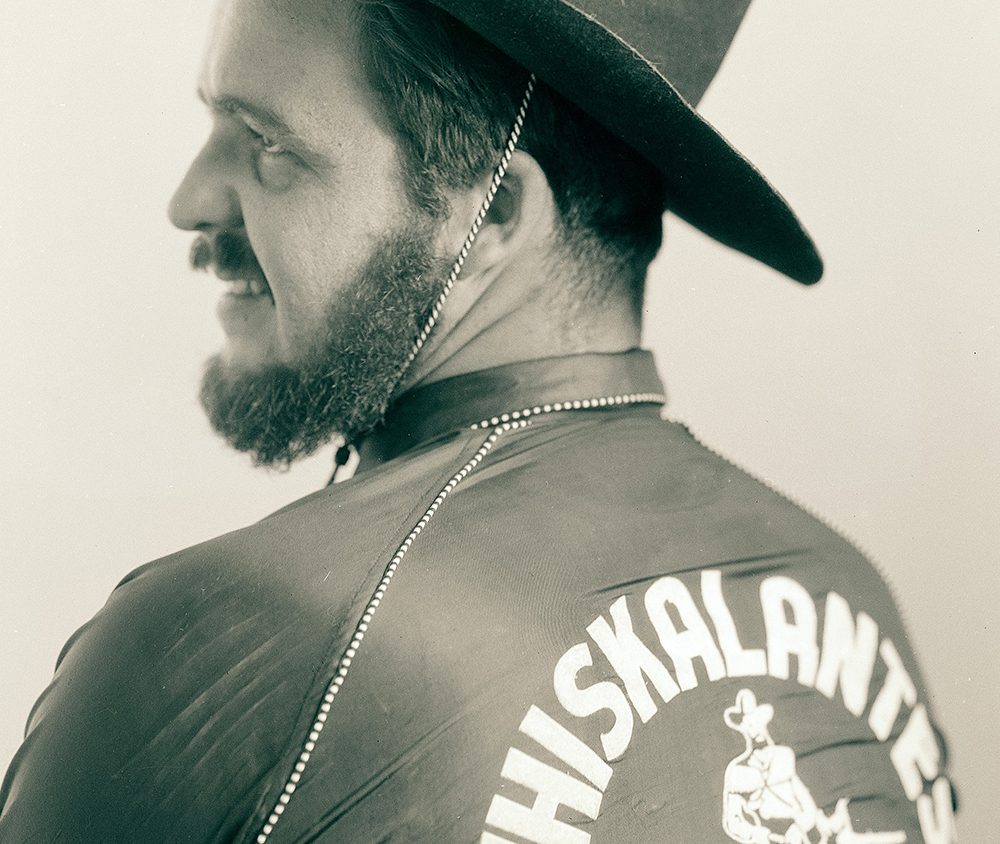The Lane County History Museum is celebrating poor taste.
The Culture of Kitsch, curator Faith Kreskey says, is meant to be a lighthearted look at material culture, especially of working class people: TV dinner packages from the 1950s or ’60s, a milk bottle, statues of dogs, a handful of paintings by people you’ve probably never heard of — they’re all part of the fun. The show runs at the museum through Sept. 5.
Wonderful blown-up images taken from the museum’s extensive collection of archival photographs are among the most interesting materials. Photographs of people doing things we might consider kitsch today, such as growing beards for the Oregon Trail Pageant parade. That’s what a group known as the Whiskalantes did starting in 1941. The “Specifications for Whiskers” printed in The Eugene Guard included “Any type of mustache, e.g. handlebar, Clark Gable, etc.”
“Wool Work Wreath” (mid-19th century) is a floral arrangement of dyed wool fibers that incorporates a hummingbird attached by a bouncy spring. Wreaths are common today, decorating the doors of everyday people around the holidays. The difference is that ones similar to this, made around the 1850s, were often made from human hair.
Touring a lighthouse on the coast a few years back I saw how the woman of the house kept her discarded hair in a porcelain dish to use later for making decorative art, such as the piece on display here. When kept over long periods of time human hair takes on a dry, dead appearance. Hmmm — maybe some things shouldn’t be saved.
Kitsch is one of those words not simple to define. The exhibit provides a number of definitions.
“One definition of the term ‘kitsch,’” the exhibit says, “is ‘not real art.’”
Next to the display of decorative art, which houses the wreath, hangs a painting titled “An Elder Prays” (circa 1950), a pastel on paper by Eugene artist Martha Shelley. In it a white-haired man wearing a suit folds his hands. In the background is a rainbow showered in gold light.
Looking at this painting by Shelley begs the question: What makes one painting real art and another not?
“Real art” in museums normally has a high market value. “An Elder Prays” is appreciated for reasons other than monetary: perhaps to appreciate the person who made it.
Shelley was a self-taught artist. She moved to Eugene in 1923 with her husband, who came to attend a bible college here. They came from eastern Oregon, where Shelley lived on a ranch and grew to love horses. In 1955 she moved to a farm near Vida, where she established the World of Horses Museum. The museum was open until 2000. Admission was free.
The exhibit gives us another defining feature of kitsch, which is that only things made from a past culture can be appreciated despite or because of being “in poor taste.”
An entirely separate exhibit at the museum is titled Portraits. It is composed of 10 fascinating images of Native Americans, several of which depict individuals about to participate or fully engaged in the Oregon Trail Pageant.
The parade began in the 1920s, at which time Native people participated. In the 1940s, they were replaced by non-Native Americans wearing stereotypical costumes borrowed from TV and movie representations.
One portrait, originally a tintype, is of brothers Charlie Tufti and Frank Warner, circa 1880. Tufti, a member of the Mollala tribe, was orphaned at 6 and sold to the Warner family. In 1884 Tufti was awarded a donation land claim “when it was still illegal for Native Americans to own land outside of reservations.” His descendants still live in the area.
The Culture of Kitsch and Portraits both come from Lane County’s past. The preoccupation with thinking about art and culture change, encouraged in the kitsch show, can be applied to behaviors represented by other displays in the museum or in life. Writing this review during Super Tuesday week, I couldn’t help but think of one party’s political campaign slogan to “Make America Great Again.”
Visiting the Lane County History Museum encourages you to appreciate the past, but also to consider which aspects of past cultures — whether material or behavioral — ought to be brought back.
